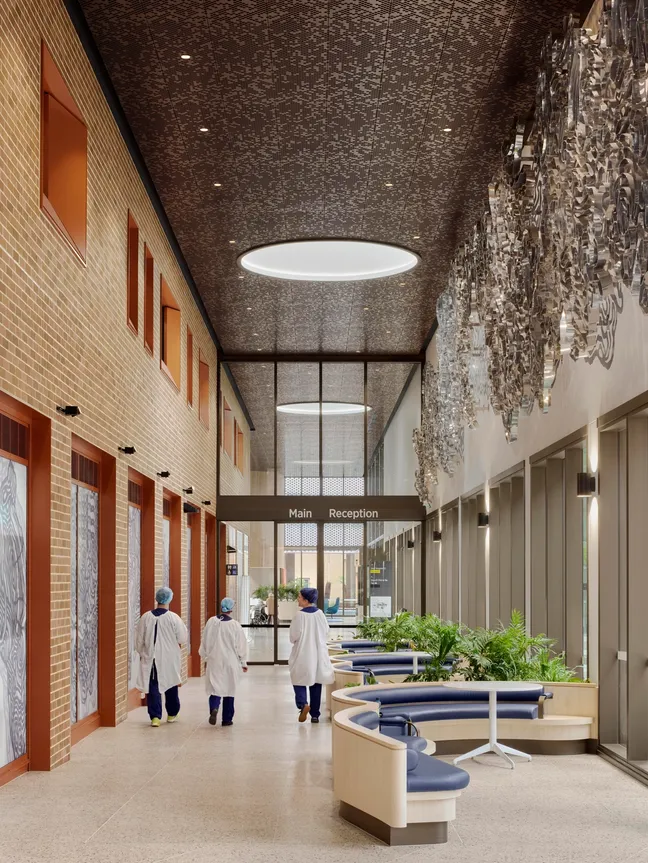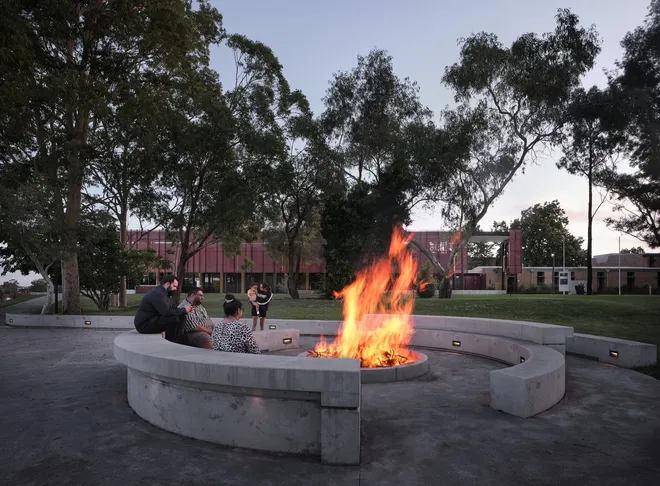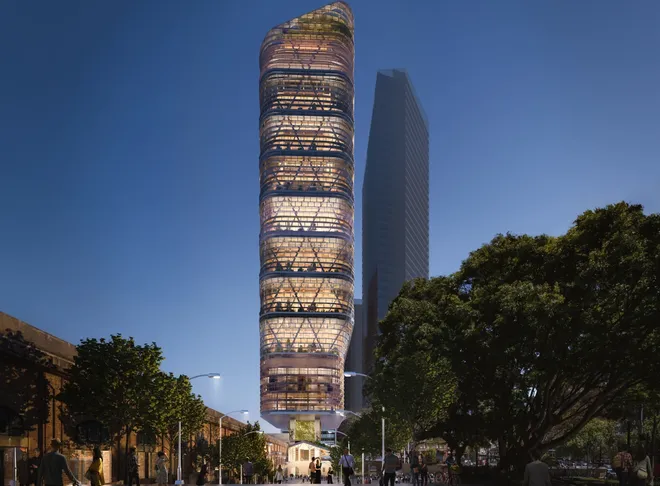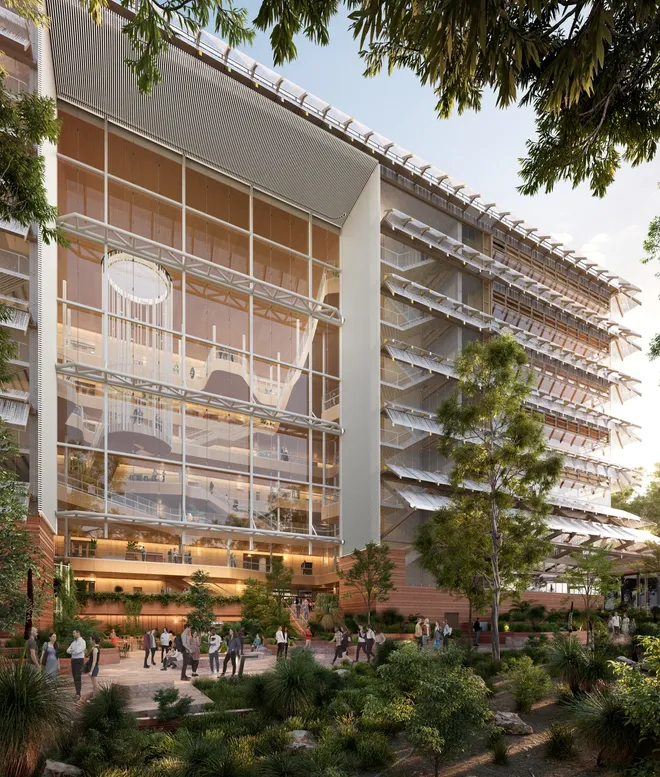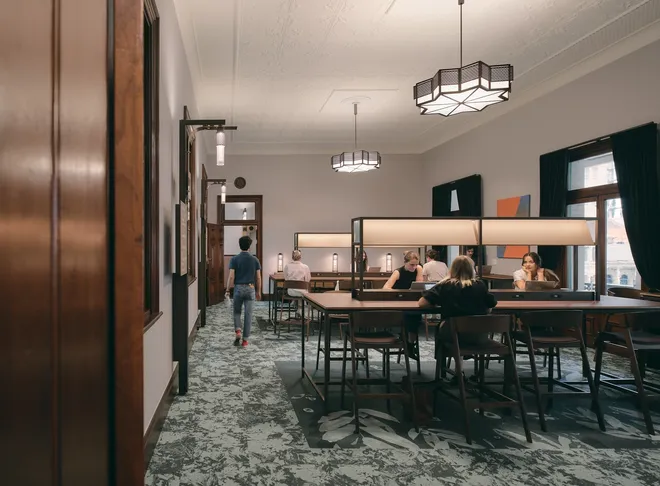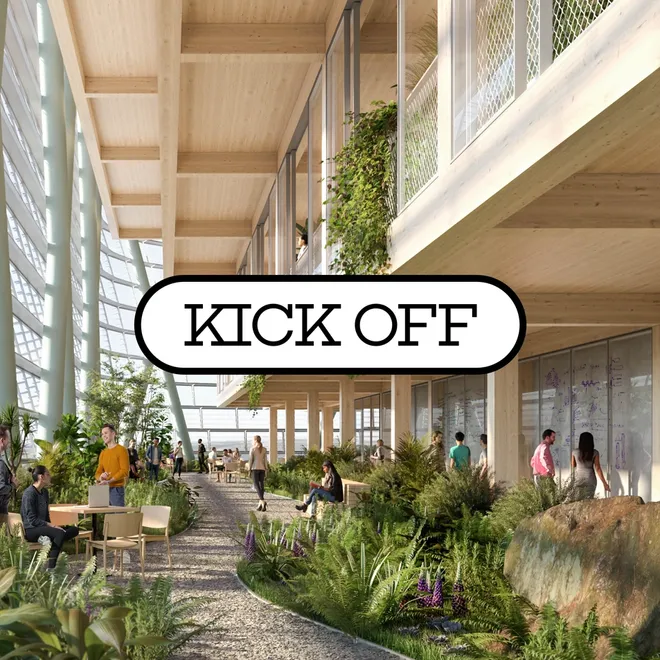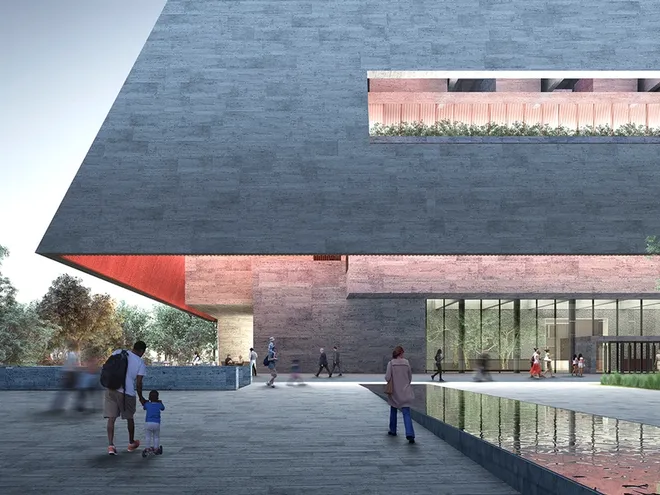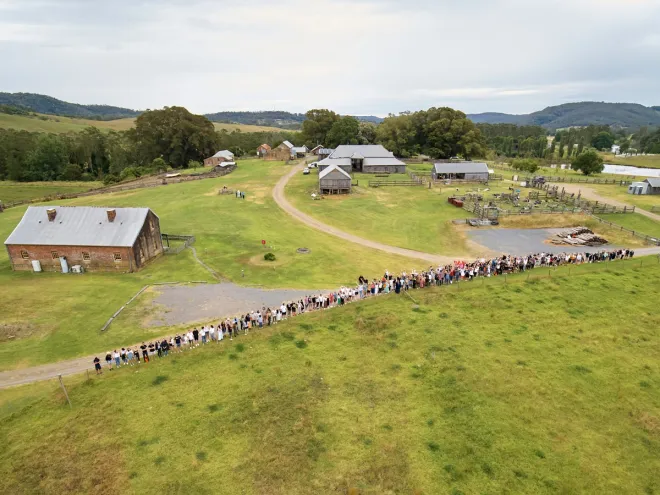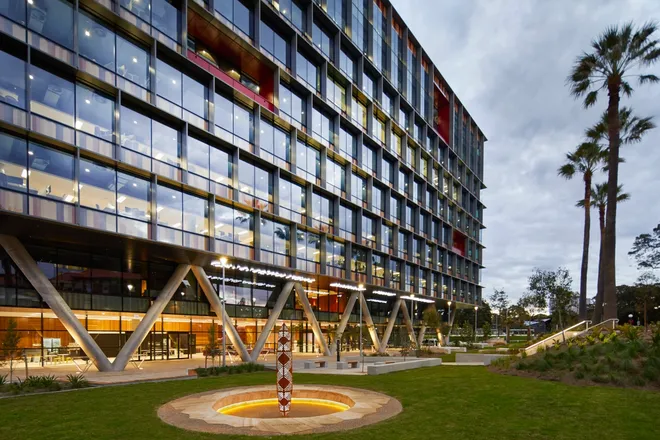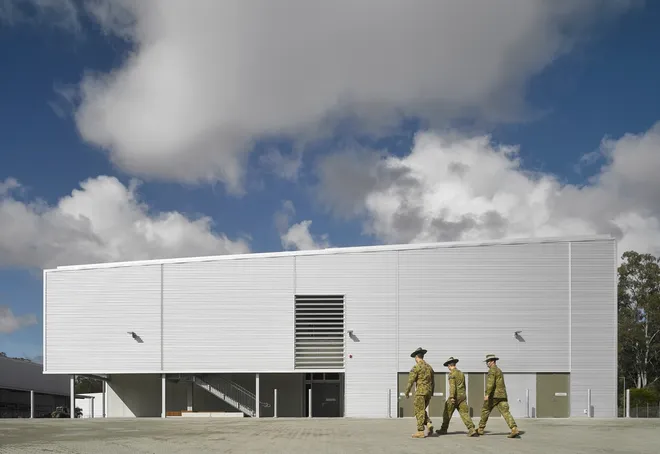Designing with Country
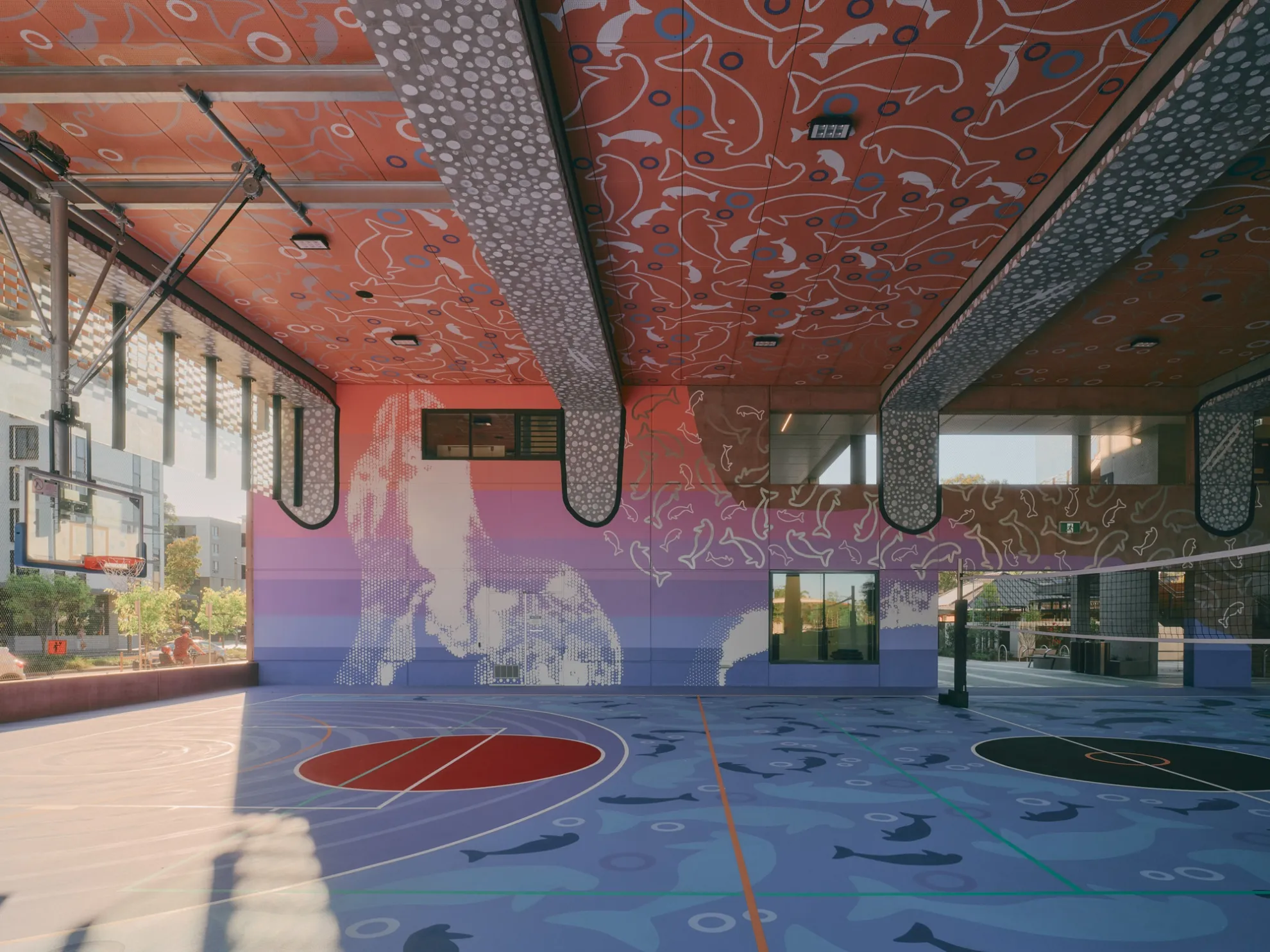
At Green Square Public School and Community spaces, Archibald Prize winner Blak Douglas has emblazoned the sports courts with First Nations storytelling. Titled "The Belly of the Feast," the large-scale mural draws inspiration from the 6,000-year-old dugong bones unearthed nearby in 1896.
When First Nations speak of Country, it is about the place of their ancestors, stories, lore and knowledge. These memories and connections form the basis of songlines and bind people to their Country. Country is a matter of sustenance and is therefore as much a cultural and spiritual condition as it is a scientific or physical one.
Acknowledging that a site belongs to a specific Country on a particular part of this continent enables us to draw inspiration, ideas and opportunities directly from that place and the people who belong to it. Our Designing with Country work guides the way we think about projects that engage with First Nations communities and contexts.
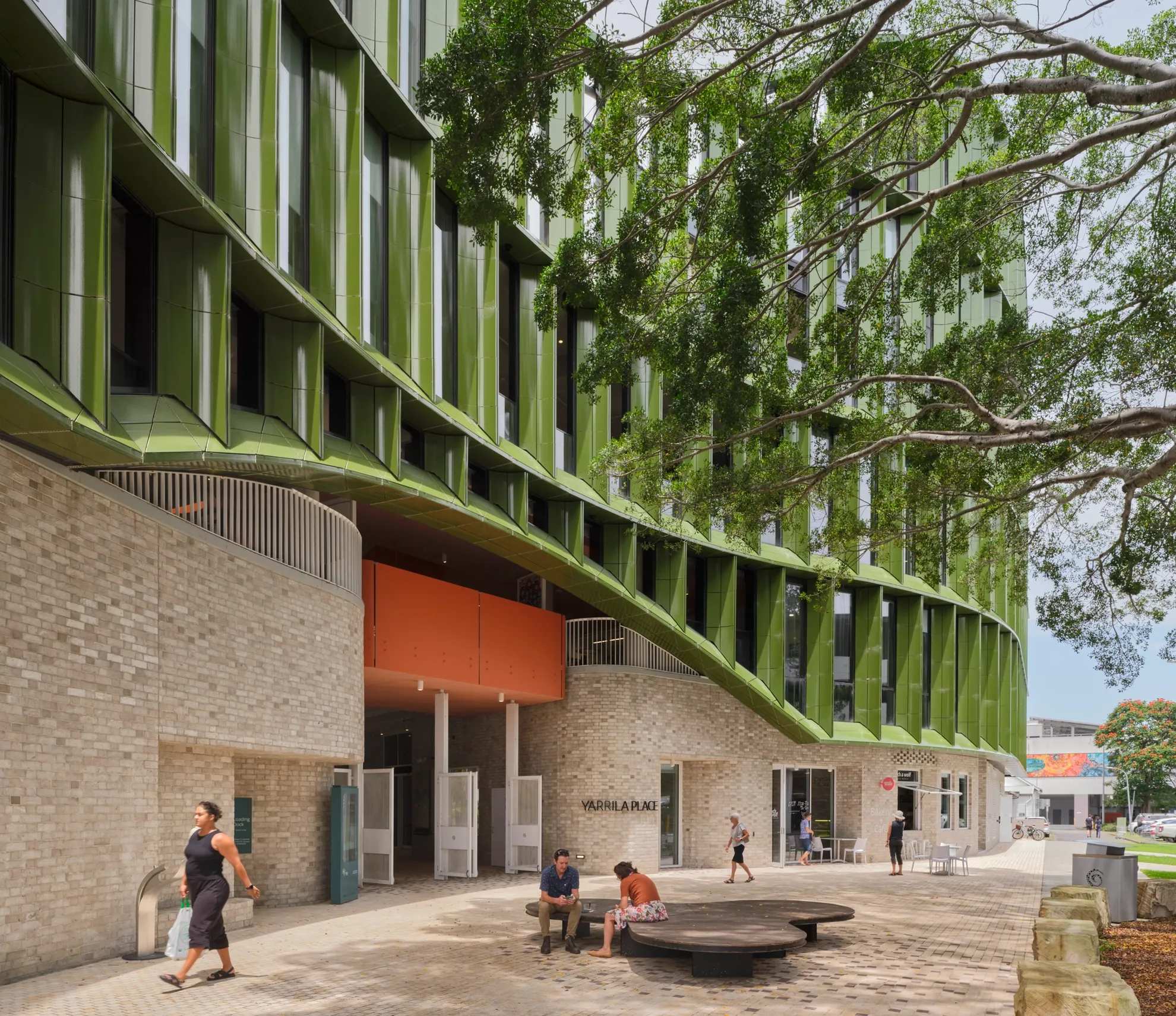
The story of Yarrila Place begins on Gumbaynggirr Country. ‘Yarrila’ is the Gumbaynggirr word meaning “place of light”. The architecture offers welcome and ‘safe harbour’ to all with a design that has evolved through many conversations with Indigenous, non-Indigenous and migrant communities.

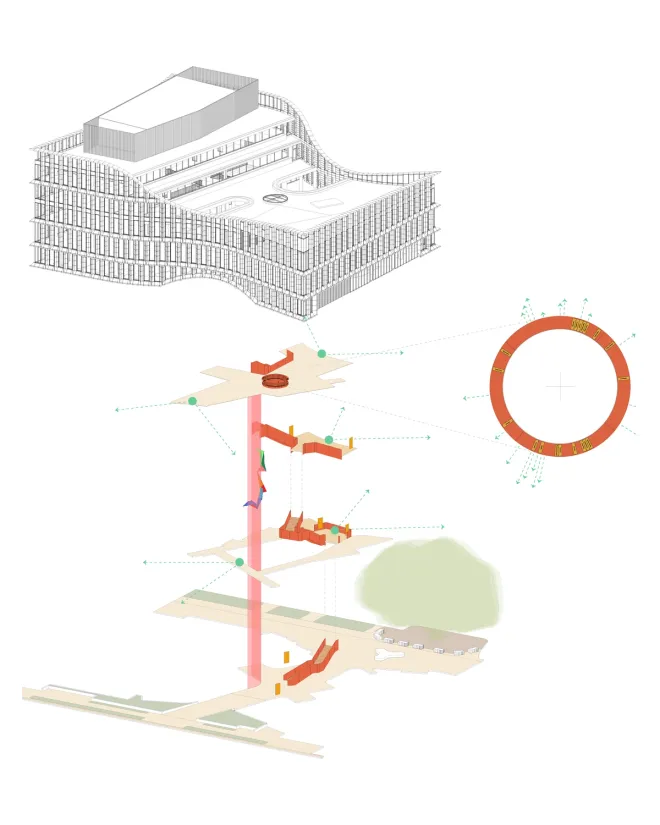
Inside the atrium, winding staircases of orange steel guide an ascending ‘track’ through the heart of the building. Staircase landings orient views to culturally significant sites, nominated by the six clans of the Gumbaynggirr People.
Why would we make buildings, modern precincts and communities connect to Country and what makes this important?
Our underlying belief is that it is the first point of connection to culture, creativity and science, and an awareness that it has existed in Australia for over 50,000 years.
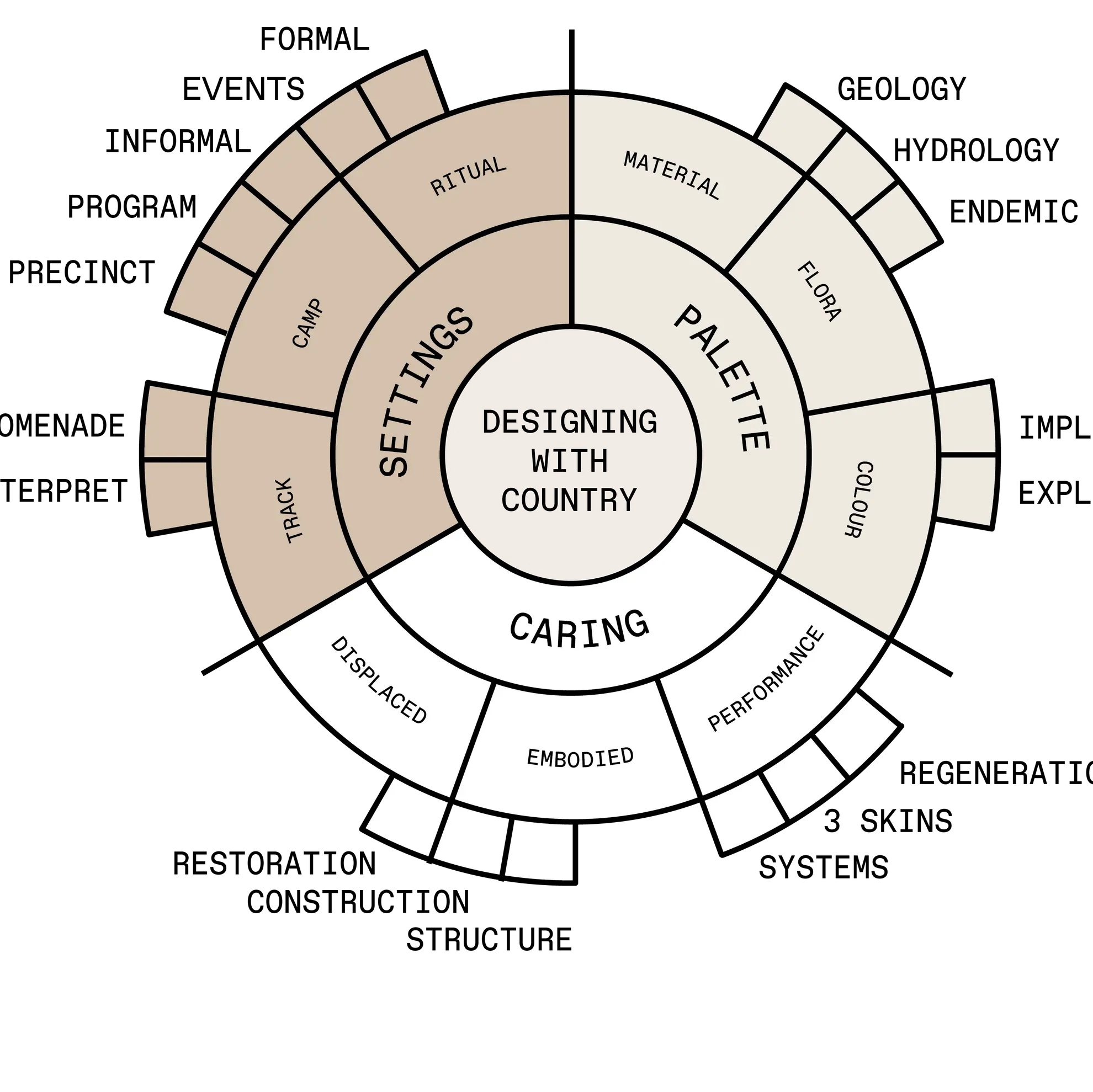
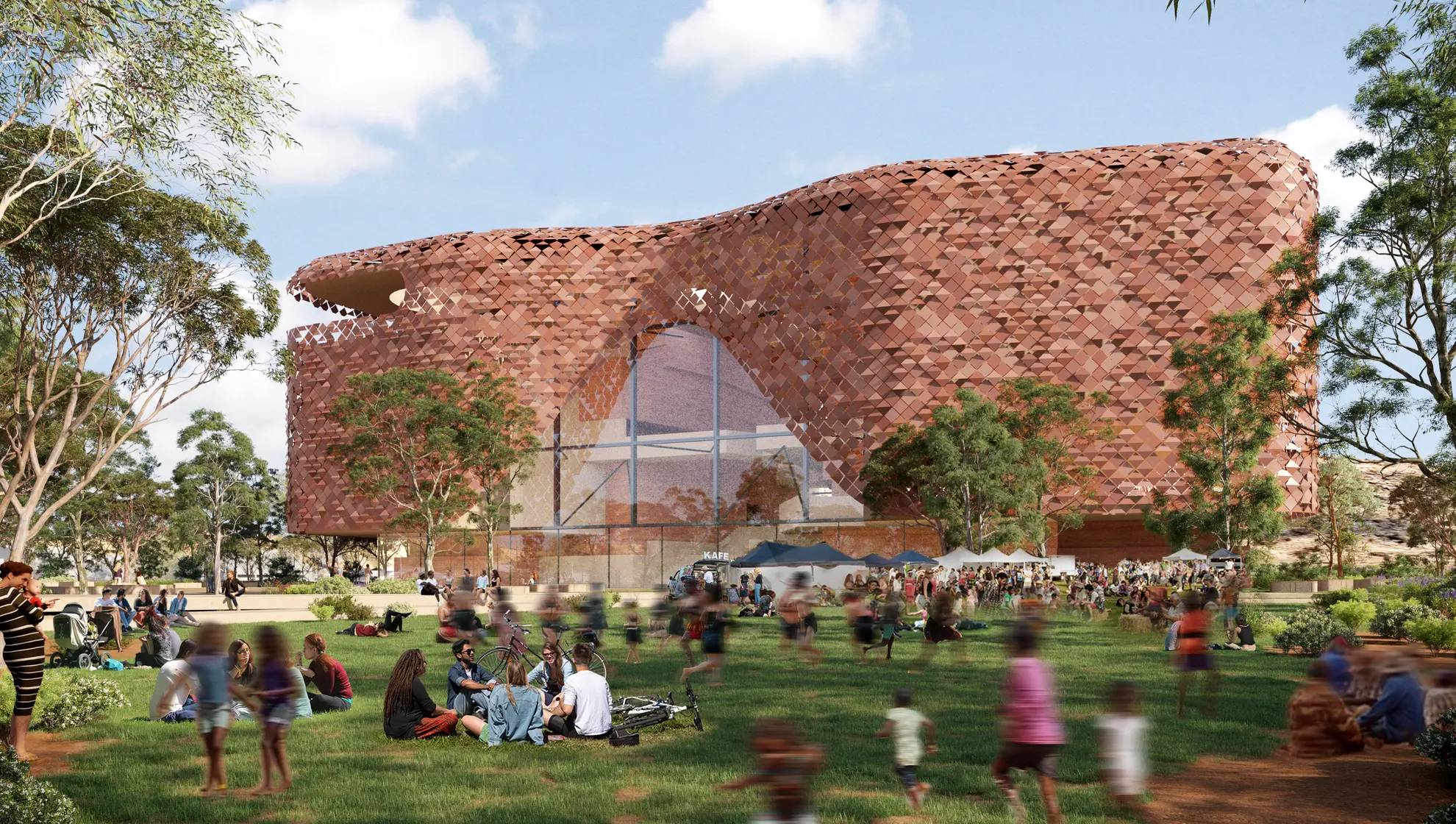
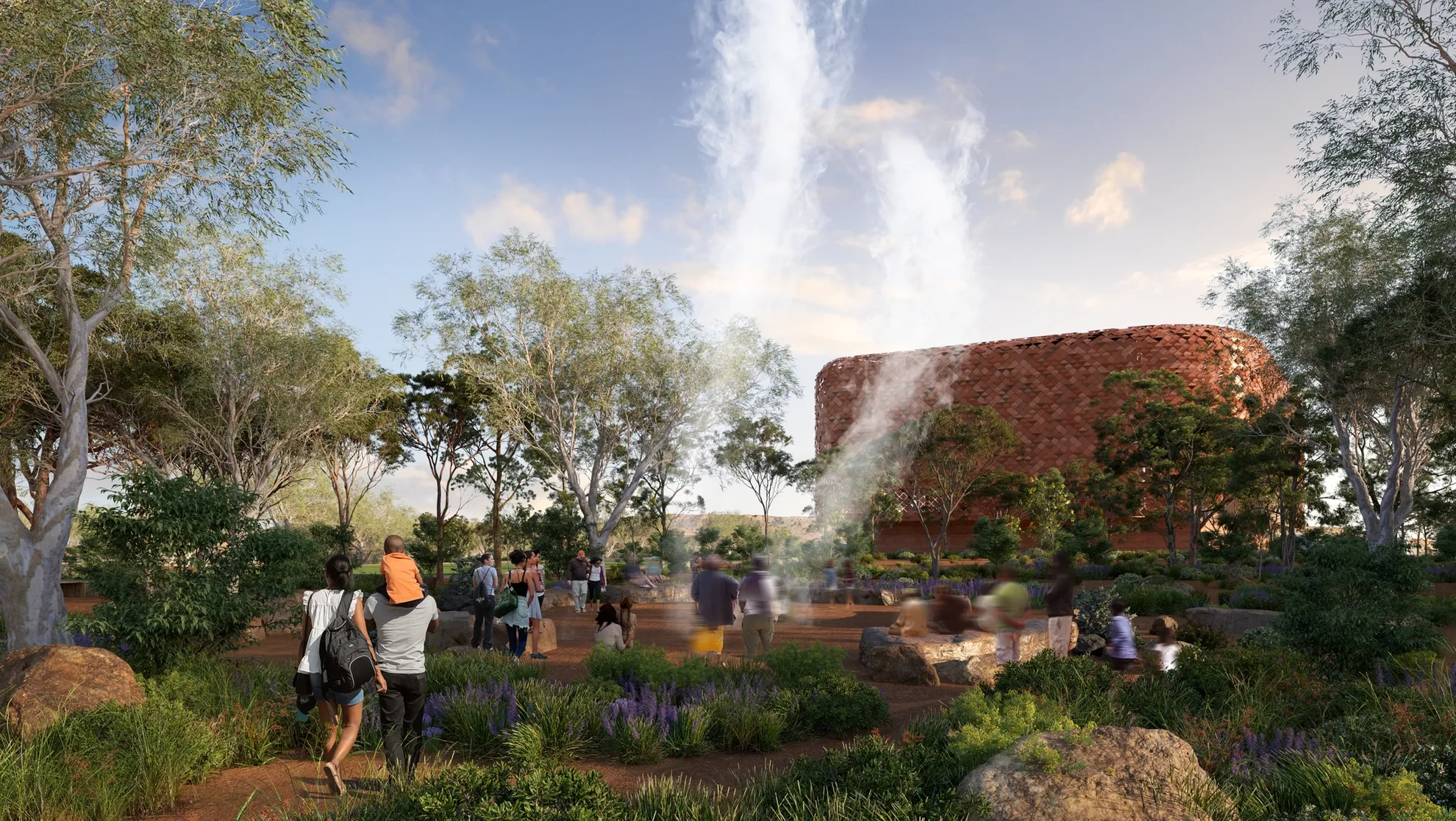

Understanding Country means we stop reading landscape as being empty and start to see that parts of the land have been ritualised and have meaning beyond what we can see. In thinking about Country, there is a logic for movement located in the idea of a track, logic for occupation emanating from the idea of a camp and logic for events found in the idea of ritual.
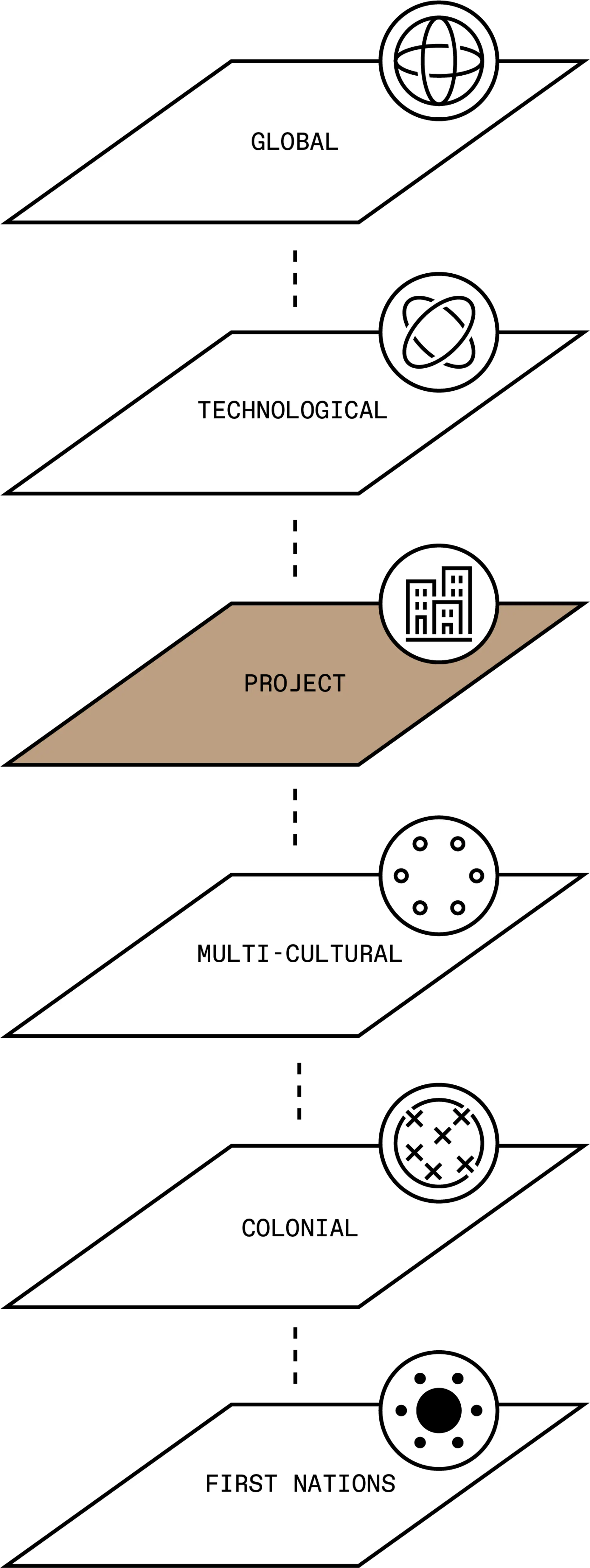
Our approach to Designing with Country is grounded in an understanding that there are many layers of influence that can affect the outcome of a project.
The first layer is First Nations and acknowledges and engages with the Community to understand aspirations, the connection to, and characteristics of, Country and culture.
The second layer is Colonial and draws upon the economic networks and hard infrastructure that has shaped the urban landscape of the present day.
The third layer is Multicultural and, by way of inclusion, acknowledges the modern multicultural history and vibrancy of the locale.
The fourth layer is bound to the Technological and understands that harnessing current technology connects to the future.
The fifth layer is Global and seeks to both benchmark the project as an exemplar and understand its relevance on the world stage.
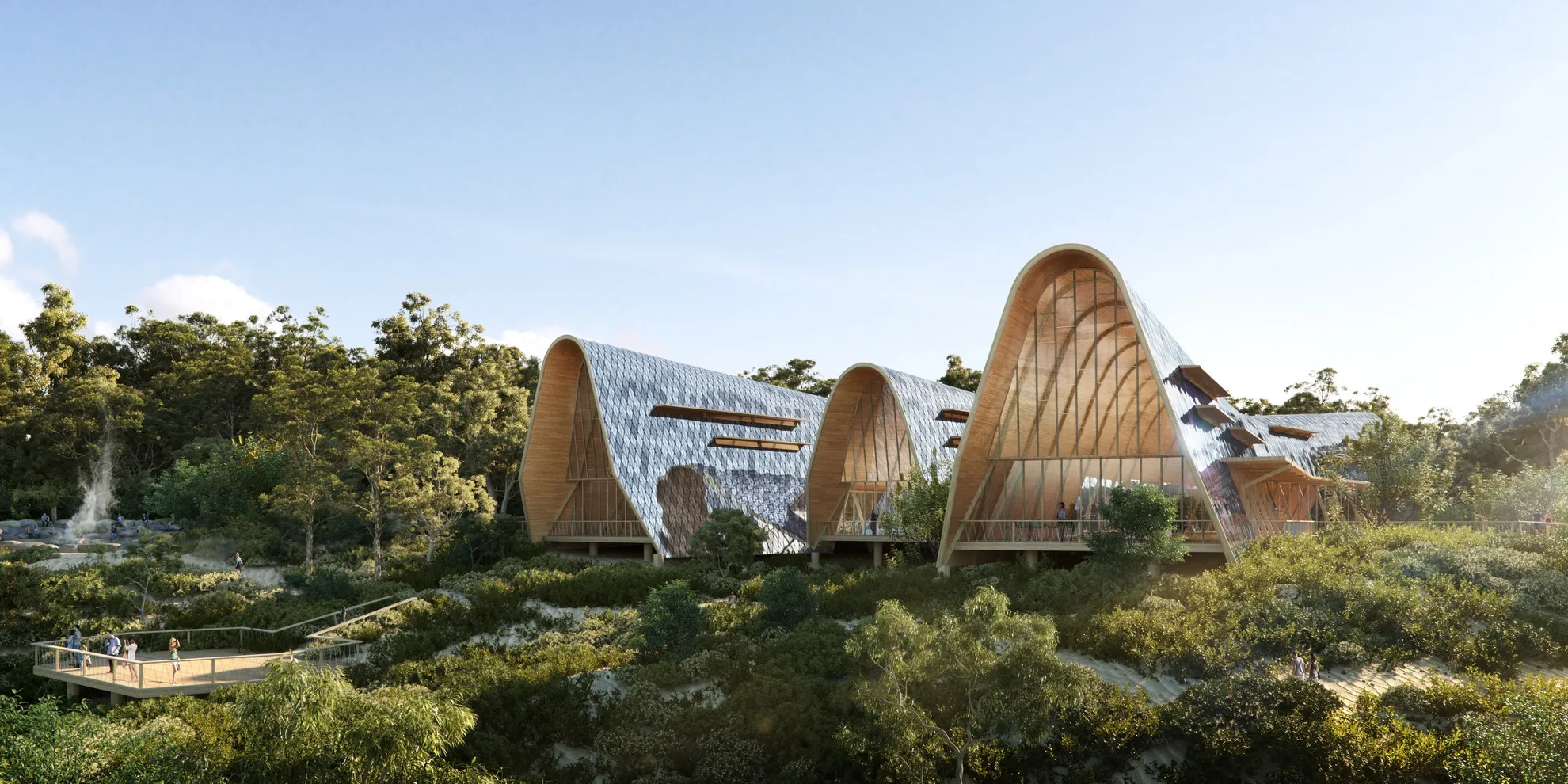
Centring Aboriginal culture, the concept created a place to consolidate, preserve, share and educate on the lore, knowledge and experiences of the First Nations peoples of this Country. A walkway connects the Cultural Centre, amphitheatre and viewing decks to Country beyond — a ‘track’ as gesture of repair, stitching Country back together.
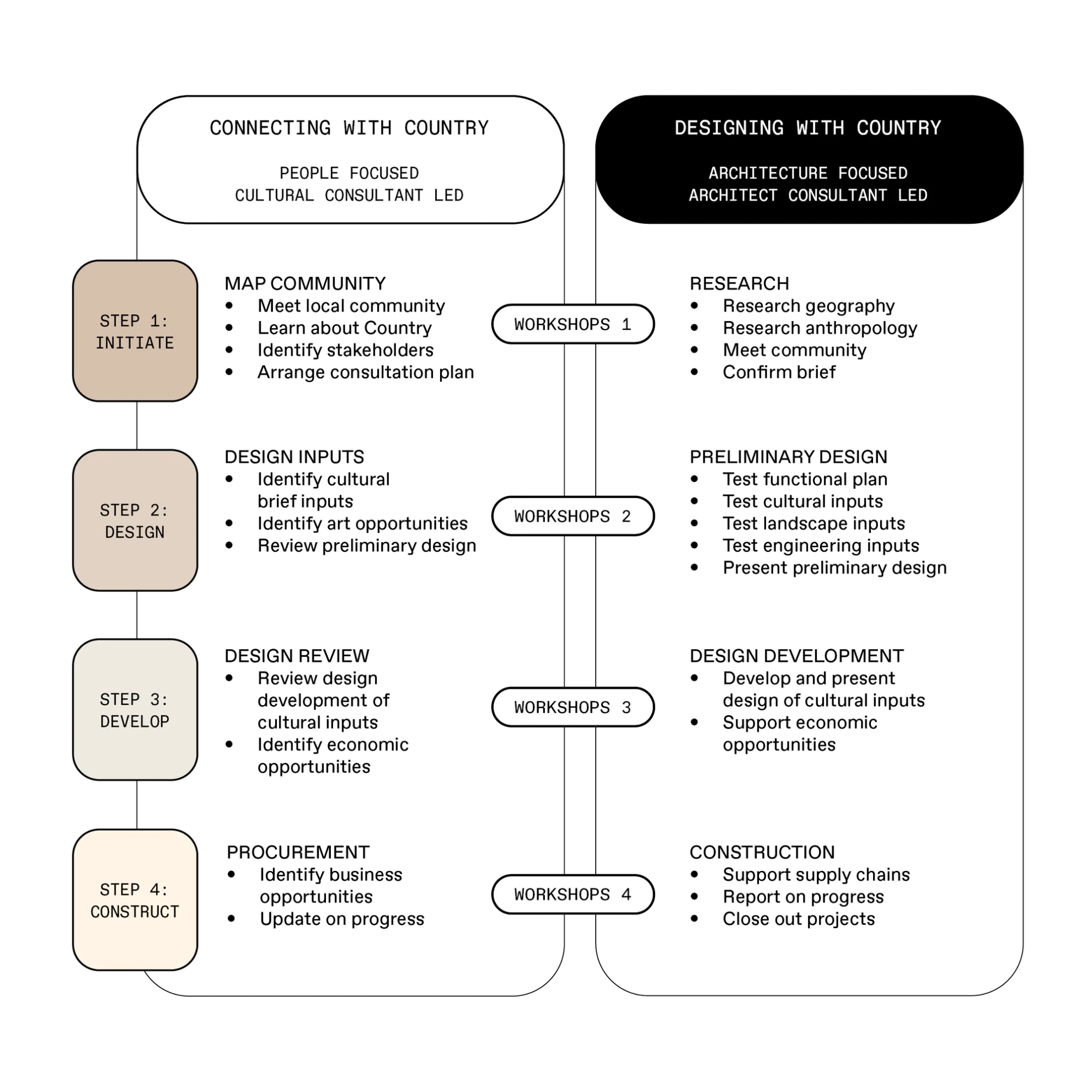
In Australia, Connecting with Country and Designing with Country are related but distinct concepts, both rooted in acknowledging and respecting First Nations relationships with land, waters and sky.
Connecting with Country refers to the personal, cultural and spiritual relationships individuals and communities develop with Country. For First Nations peoples, Country is a living entity — home, teacher, ancestor and source of identity.
Non-Indigenous Australians are encouraged to connect with Country by listening to Traditional Custodians, engaging respectfully with cultural knowledge, and understanding the land’s stories, history and significance. This connection is about relationship and responsibility, rather than ownership.
Designing with Country, on the other hand, is a practical design approach that embeds First Nations knowledge, values and perspectives into the built environment. It goes beyond aesthetics, involving co-design with Communities and considering how architecture and landscape planning can honour cultural protocols, natural systems and place-based narratives. It respects both ecological sustainability and cultural heritage, creating spaces that reflect deep care for Country and Community.
While Connecting with Country builds understanding and respect, Designing with Country applies that understanding to create meaningful, place-responsive environments. Both are essential steps toward reconciliation and culturally aware design in Australia.
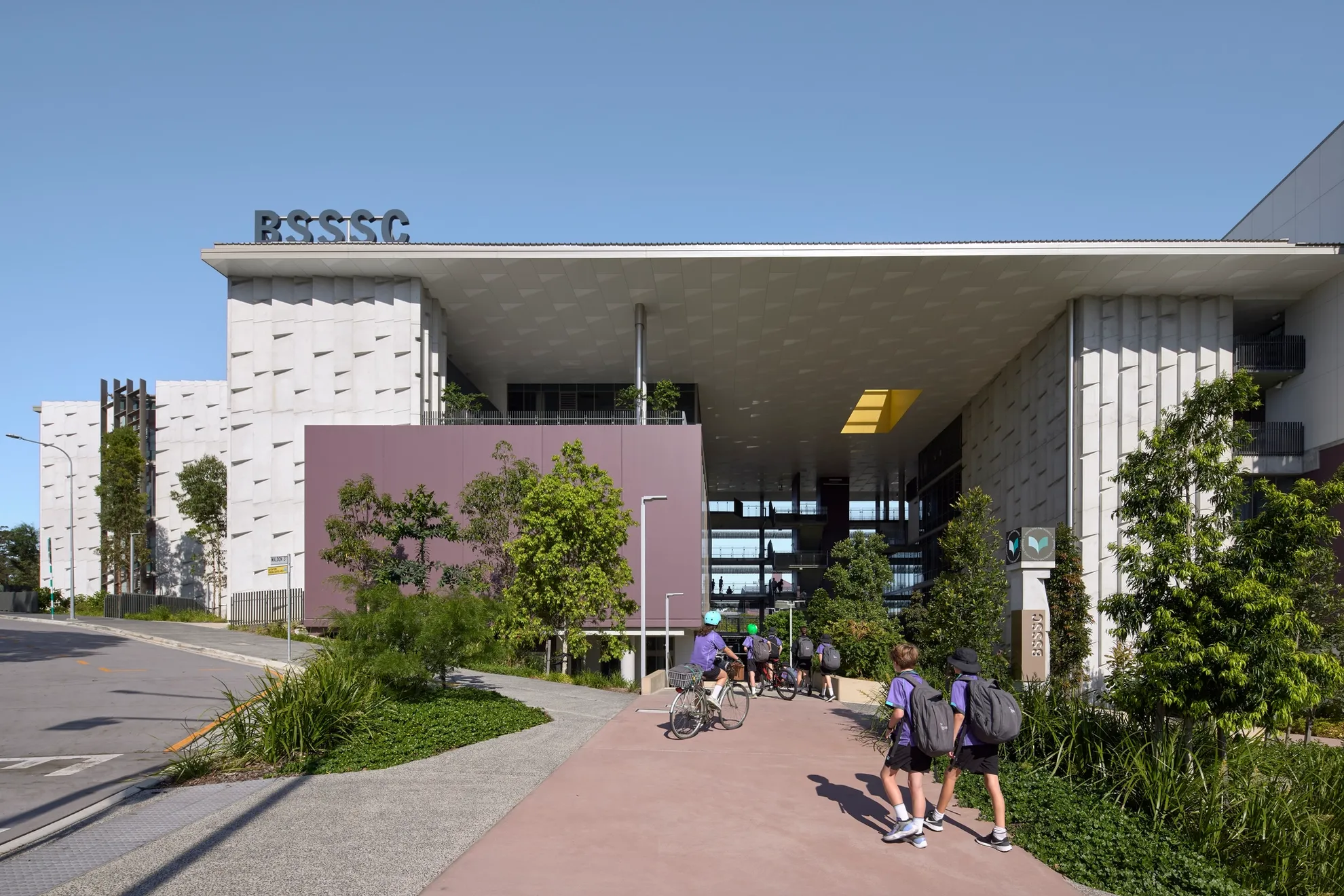
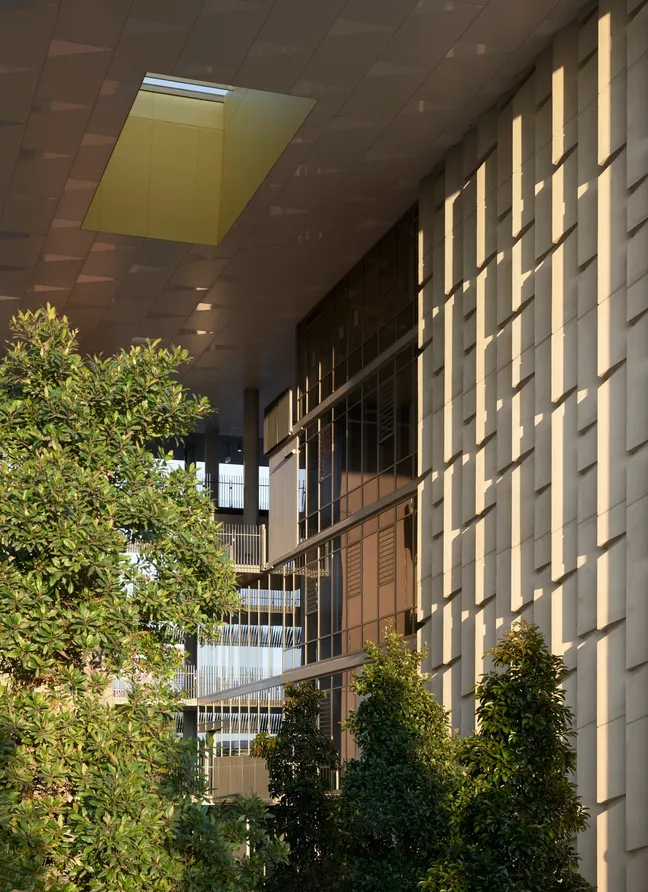
A place of making — expressed in the marked concrete as an abstraction of tool-making, and in the woven detailing of trellises, balustrades and sunshades.

The ambition of the Designing with Country Framework is to enable a greater relationship between people, knowledge and environment and work towards a non-conflicted future. This ambition can be realised by acknowledging the significance of First Nations culture in the reconsideration and development of the built environment.
By embedding Designing with Country into our multi-layered design approach we open ourselves and our clients to the potential of learning from First Nations communities. What better way to understand the cultural tapestry that will take us into the future than acknowledging the ancient origins of Country.

Ngunnawal, Wiradjuri and Kamilaroi artist Lynnice Church created the Welcome Hall Veil, titled Journey of Healing, depicting culturally significant sites in the Ngunnawal landscape.
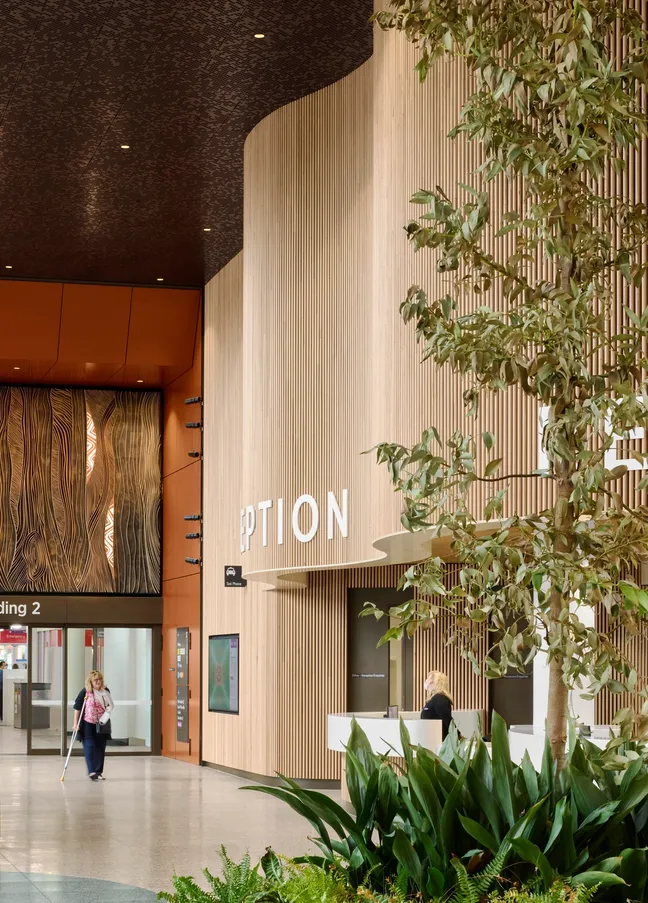
Inside the Welcome Hall, Ngunnawal artist Bradley Mapiva-Brown pays homage to the sacred woodlands that surround this place of healing with the artwork Ngala Dhawura - Country of Many Trees.
